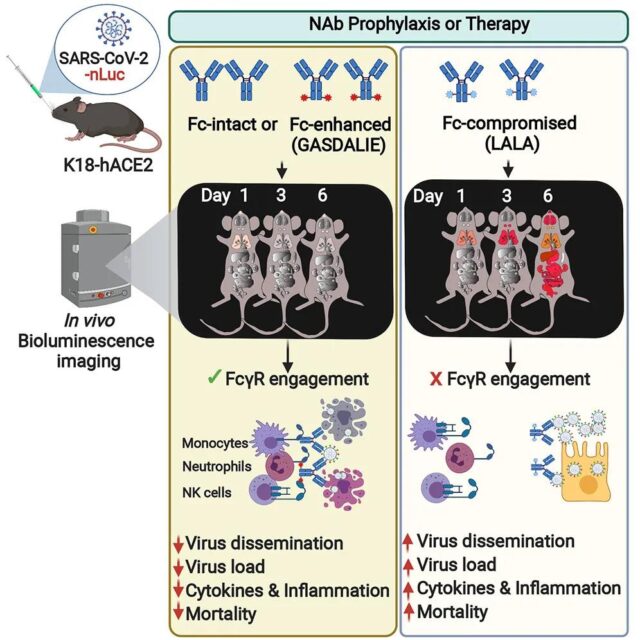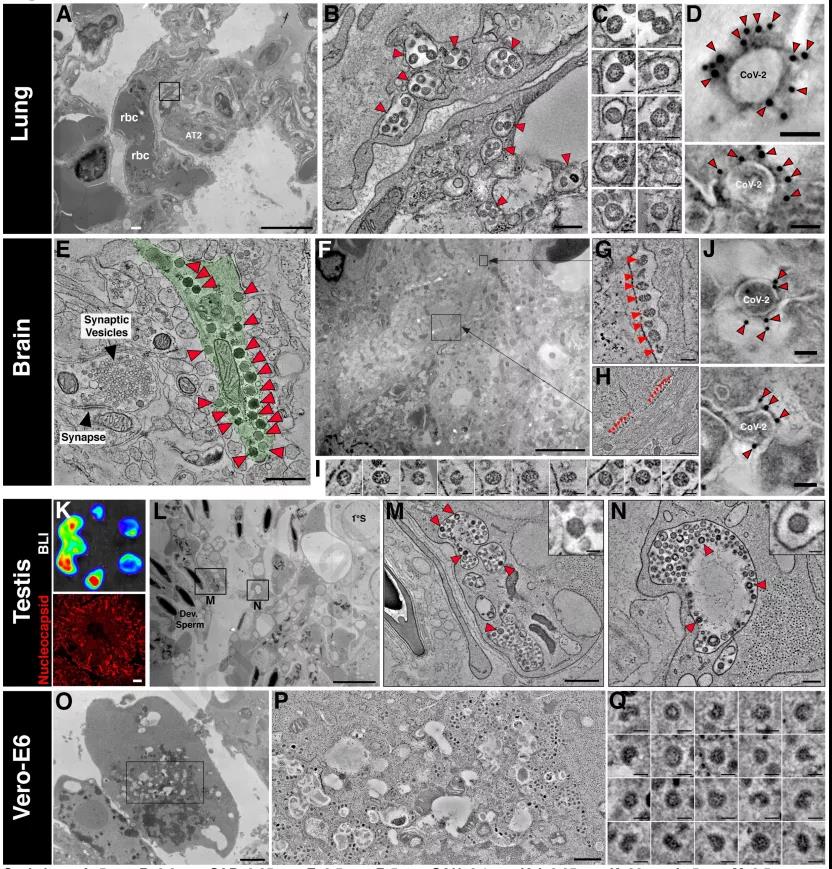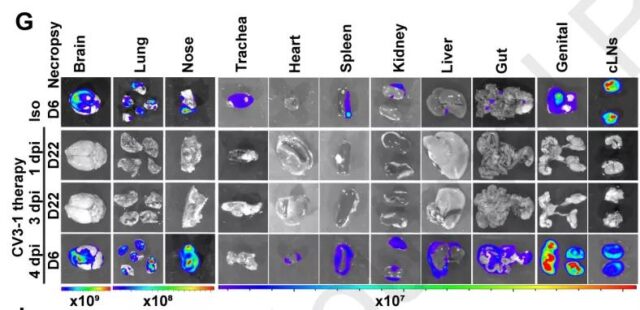First time to record the whole process of COVID-19 infection in live animals
- Normal Liver Cells Found to Promote Cancer Metastasis to the Liver
- Nearly 80% Complete Remission: Breakthrough in ADC Anti-Tumor Treatment
- Vaccination Against Common Diseases May Prevent Dementia!
- New Alzheimer’s Disease (AD) Diagnosis and Staging Criteria
- Breakthrough in Alzheimer’s Disease: New Nasal Spray Halts Cognitive Decline by Targeting Toxic Protein
- Can the Tap Water at the Paris Olympics be Drunk Directly?
First time to record the whole process of COVID-19 infection in live animals, the : antibody therapy needs the best time
First time to record the whole process of COVID-19 infection in live animals. The new coronavirus has ravaged the world for more than a year. During the epidemic, specific neutralizing antibodies have been proven to be effective in treating COVID-19 pneumonia. Antibodies are multifunctional molecules with multiple properties, but scientists have not yet fully understood their immune protection mechanisms.
Recently, researchers from Yale University published a research paper titled: Live Imaging of SARS-CoV-2 Infection in Mice Reveals that Neutralizing Antibodies Require Fc Function for Optimal Efficacy in the Immunity journal.
The study used bioluminescence imaging technology to capture the spread of the new coronavirus for the first time in living animals, tracking the virus from the nasal cavity of infected mice to the lungs, to other organs, and finally invading the brain. This video image also monitors the real-time therapeutic effects of neutralizing antibodies, providing researchers with in-depth understanding of the effects of antibodies.

Priti Kumar, co-corresponding author of the study and associate professor of infectious diseases at Yale University School of Medicine, said: “We used to think that neutralizing antibodies were enough to prevent infection, but now it seems that antibodies must appear in the right place at the right time, and also A sufficient titer is needed.”
In this study, researchers used fluorescent markers of biomolecules and electron microscopy to track the spread of the new coronavirus at the single-cell level. Real-time imaging shows that in mice, the new coronavirus is taking an “old way”: it spreads from the mouse’s nasal cavity to the lungs, and then spreads to various organs of the body, including the brain, eventually leading to death. This is the same way that people are infected with the new coronavirus in the human body.

The researchers observed that the mice showed signs of infection in their lungs only one day after exposure. By the 4th day, the researchers recorded an increase in the luminescence signal in the brain area. From day 4 to day 6, the luminous signal increased sharply, indicating that the virus was rapidly replicating and invading the nervous system. This coincided with the replication of the virus in the intestine and reproductive tract, and the mice subsequently lost weight.

On day 6, the mice died. Microscopic images taken during the autopsy showed that the luminous signal activity in the brain was the largest, followed by the lungs and nasal cavity.

Then, the researchers isolated two effective neutralizing antibodies CV3-1 and CV3-25 using the plasma of survivors of COVID-19 pneumonia. When testing preventive treatments, CV3-1 performed better. After pretreatment of the mice with the antibody, the mice are almost completely unaffected by the new coronavirus, and there is no sign of infection in any organ. In contrast, CV3-25 reduced the viral load and delayed death by two days, but it failed to prevent it. In addition, the viral load of CV3-25 treated mice was similar to that of control mice.
Using the effectiveness of CV3-1, the researchers tested whether the antibody will have a positive effect if given after exposure to the new coronavirus. Imaging studies have confirmed that if administered on the 1st or 3rd day after infection, CV3-1 can successfully control the spread of the virus and prevent it from invading the nervous system. However, treatment on day 4 proved to be too late because the antibody could no longer control the spread of the virus to the brain, causing 75% of the mice in the cohort to die.
The co-corresponding author of the study, Professor Pradeep Uchil, a researcher in the Department of Microbiological Pathology at Yale University, said: “Through real-time imaging of the spread of the virus, we can quickly discern whether the treatment is effective in just three to five days. This is a development response to the current and future. A key time-saving feature of pandemic response.”
When conducting additional tests on CV3-25, the researchers found that in order to ensure the best treatment for COVID-19 pneumonia, the neutralizing antibody must exhibit an “effector” function, which is to send a signal to the immune system to attack and kill the infected Necessary for the cells.
In summary, the study shows that the ability to’call for help’ from other cells in the immune system and eliminate infected cells is essential to provide optimal protection. However, if there is no effector function, neutralization alone will not be so effective.
(source:internet, reference only)
Disclaimer of medicaltrend.org
Important Note: The information provided is for informational purposes only and should not be considered as medical advice.



